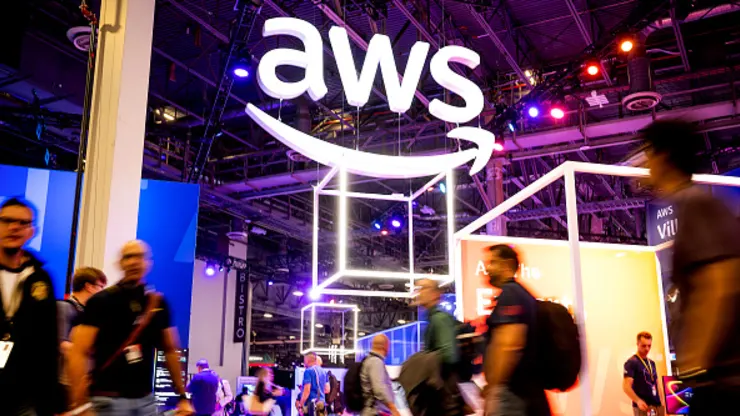Amazon reported better-than-expected revenue on Thursday, but the stock’s initial pop was wiped out after executives raised concerns of ongoing weakness in cloud growth.
Here are the key numbers:
- Earnings: 31 cents per share
- Revenue: $127.4 billion vs. $124.5 billion expected, according to analysts surveyed by Refinitiv
It’s not immediately clear if the reported earnings are comparable to the Refinitiv analyst estimate of 21 cents per share.
Here’s how other key Amazon segments did during the quarter:
- Amazon Web Services: $21.3 billion vs. $21.22 billion expected, according to StreetAccount
- Advertising: $9.5 billion vs. $9.1 billion expected, according to StreetAccount
Sales at AWS rose about 16% in the first quarter to $21.35 billion, above the $21.22 billion projected by Wall Street. Still, that marks a deceleration from the previous quarter, when AWS grew 20%.
Companies have been trimming their cloud spend in recent months amid a challenging economic environment, and finance chief Brian Olsavsky warned on the call after the report that clients keep tightening their belts.
“As expected, customers continue to evaluate ways to optimize their cloud spending in response to these tough economic conditions in the first quarter,” Olsavsky said. “We are seeing these optimizations continue into the second quarter with April revenue growth rates about 500 basis points lower than what we saw in Q1.”
The shares initially jumped as high as 10% after Amazon said revenue rose 9% from $116.4 billion a year earlier, topping estimates. Even with the revenue beat, Amazon remains mired in single-digit sales growth coming off its weakest year for expansion in its quarter-century as a public company.
The stock sold off during the earnings call and turned negative, falling almost 3% below its closing price.
For the second quarter, Amazon said revenue will be $127 billion to $133 billion. Analysts had called for sales of $129.8 billion, according to Refinitiv. The second-quarter forecast suggests Amazon expects sales to rise between 5% and 10% from the same period a year earlier.
“Our advertising business continues to deliver robust growth, largely due to our ongoing machine learning investments that help customers see relevant information when they engage with us, which in turn delivers unusually strong results for brands,” CEO Andy Jassy said in the earnings statement.
Jassy, who succeeded founder Jeff Bezos at the helm in July 2021, has been aggressively slashing costs as Amazon grapples with slowing sales in its online shopping and cloud-computing divisions. Amazon has shuttered several of its more unproven bets, like a telehealth program and a line of fitness wearables. It’s also slowed new warehouse expansion and paused construction of its second headquarters in Virginia, dubbed HQ2.
Amazon is laying off 27,000 employees, the largest job cuts in its 29-year history. Earlier this week, some employees in AWS and human resources were let go, following cuts in advertising and Twitch live streaming.
Amazon shaved its head count by about 76,000 people to 1.46 million employees as of the end of the first quarter, reflecting in part the recent layoffs, as well as attrition in its warehouses that typically occurs following the peak holiday shopping period.
Net income came in at $3.2 billion, or 31 cents per share, during the quarter, compared to a net loss of $3.8 billion, or 38 cents per share, in the year-ago period.
Operating income in the quarter rose to $4.77 billion from $3.67 billion a year earlier. The company is still dependent on AWS for its profitability, as the cloud unit generated operating income of $5.1 billion in the quarter.
Amazon’s advertising unit continues to hum along, with revenue growing 23% year-over-year to $9.51 billion.
“Advertising was a strong growth during the quarter at 23%, and that is continuing to hold up very well in an environment where perhaps the underlying sales of products is slowing,” Olsavsky said on a call with reporters.
Prior to the after-hours move, Amazon shares were up 31% for the year after losing roughly half their value in 2022.

